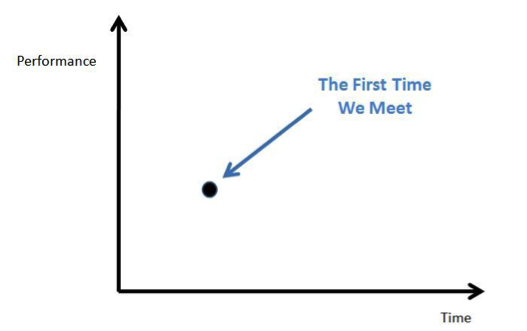VCs are impressed with a great company and great people, more than a polished pitch; Focus on building one of those rare, great companies that VCs are already looking for
In 2016 Aptoide became the first European startup to successfully raise funding from Gobi Partners and Golden Gate Ventures – this is how we did it.
First a bit of background
Aptoide was founded in 2011, in Portugal, as an alternative Android App Store to Google Play. With over 150 Million users worldwide, 700,000 apps and 4 billion downloads to date, we are reinventing the way users discover and install apps. Early 2015 we reached a critical milestone, i.e., profitability, and decided to raise our Series A in Southeast Asia. After a full year, we announced a US$4 million round with the participation of Gobi Partners and Golden Gate Ventures hence becoming the first European startup to do so.
Here are my top tips and learning lessons from leading that effort. I do hope these insights are somehow useful to other startups currently raising funds. :)
Also read: [How To Reach Mobile Users in Asia](How To Reach Mobile Users in Asia)
Show commitment (to gain trust)
When I spoke for the first time with local investors, most of them had never heard about us or invested outside SEA. For that reason many would make a pass. Some would even say: “I like your business & traction but I don’t even know anyone in Portugal that I can call to check on you …”
So we decided it was important to show how committed we were. To achieve that, we raised a bridge round from our Seed investor (Portugal Ventures) to support the costs of opening offices in Singapore and Shenzhen. Of course this wasn’t just about getting the trust from the investors – it was part of our plan – but this (risky) action sent a strong message to Gobi Partners and Golden Gate Ventures and no doubt it helped secure their signatures.
Always be ready to pitch (but not too aggressively)
You never know when you’re going to meet the right investor, so you need to be ready all the time. This means being able to concisely describe your business and why the VC should care. Many people call this an elevator pitch, but you should actually treat it like a sharing effort instead of pure pitching.
That’s what happened to me when I met e.ventures by chance during lunch at the Lisbon Summit. Before I pitched I asked politely “Do you mind if I tell you about my startup? I don’t want to spoil your lunch...” (this is very important since VCs are bombarded by pitches and this was his lunch break). Little did I know that he would ultimately become our lead investor in the round!
Tell your story right (and short)
VCs are extremely busy people (think of a 5-years old child’s attention span), so when you’re reaching out, having a long pitch could destroy your chances. My advice is to use a max of three points: (i) what you do (ii), your most impressive metrics (e.g. Downloads, MAUs, Revenue, Retention), and (iii) how much you are raising. I once worked with the most renowned consulting firm in the world and the rule was: “2 bullets is too little...4 bullets is too much!”
Once you’ve opened the door, your pitch deck will become your best friend or your worst enemy — getting your pitch wrong could destroy your chances. It’s important to hit the key points quickly (in our deck, the main KPIs were our slide #1) and to tell a great story around your company or interesting observations from running the business. At the same time, be prepared with confident answers for tough questions and make sure you don’t have more than 10 slides (put support information in backup slides).
Also read: Make Sure You Keep An Eye On These Emerging Mobile Markets
Show me the value (not the money)
You’ve heard it before, but don’t be tempted to take money from a VC who’s offering nothing beyond cash. Do your own due diligence before you request VC meetings since this will show that you believe there are synergies (even if it’s just going to Crunchbase and check if (i) they invest in your vertical, and (ii) their typical round/ticket).
Then, when you speak with VCs, it must be a two-way street, i.e., you should ask about what value the VC is bringing to the table. Aptoide had limited experience in Asia, so we needed VCs with deep local market knowledge and strong connections to key stakeholders. Gobi Partners and Golden Gate Ventures proved they would be a good fit.
Bonus tip: “Don’t look desperate!”. The analogy I usually use, when talking with other startups, is that getting the interest of a VC is like when you are single and trying to get a girl. If you look too easy to get or too desperate you will hardly get the right one…
Investors invest in lines (not dots)
A few months ago I was in a presentation of the Map of the Money (a must-have resource if you are planning to raise money in SEA), and it was the first time that I heard the expression “Investors invest in lines, not in dots.” And I could not relate more to this since it is exactly what I felt during the courting period with VCs.
Try to visualise this: When you meet a VC for the first time you will give some info about what you plan to do next and the VC puts a dot in his/her mental chart. Then after a few weeks/months you meet again and you give an update. That is one more dot in the mental chart. So you understand where I’m getting? i.e. it will get to a point where the VC can draw a line between all those points hence supporting his/her investment thesis.

All in all, let your startup do the talking
Ultimately, VCs are going to be impressed with a great company and great people, more than a polished pitch. Focus on building one of those rare, great companies that VCs are already looking for.
Then start building a relationship with them and, when the time comes, you’ll be in the driving seat of contract discussions, will get better valuations and will be presented with opportunities to work with the investors that add the most value.
